Podcast: Play in new window | Download | Embed
Today’s Guest
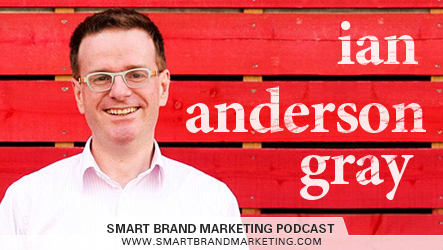
Ian Anderson Gray is the founder of Seriously Social and an Expert in Facebook Live.
This is the 67th session of Smart Brand Marketing.
You’ve seen your friends stream things on Facebook Live. I don’t know about you but I have not seen anything that made me feel that its a tool I would use. Ian has been able to build his business around it. He uses ti to get speaking gigs, coach people and sells an online course on it.
One insight that I got was to use it when I record these shows and allow people to hear the conversations live. If even one thing clicks for you while listening it is more than worth it to listen.
What are you waiting for…. press play
TOPICS DISCUSSED
- How to approach Facebook Live
- What works and what doesn’t with Live
- Barriers of getting into video
- Minimum internet speed needed
- Strategy for using it
- The formula for the content
- Strategies for bringing in repeat viewers
- Twitter and list building
- Building confidence
Enjoy!
Facebook Live: How To Get Results From It?
When it comes to optimizing customer engagement, you need a tool that allows you to do that easily and, hopefully, more than that. This is where Facebook Live comes into play and it has been regarded as one of the best online tools of the latter half of 2010.
As with all tools, of course, Facebook Live does take some getting used to before you get good at using it. But the question is this: Will it yield to you quite a lot of helpful results? The answer is yes and, to do that, there are a few things you have to understand first.
What are the Barriers to Using It?
Before we delve into why and how we should use Facebook Live, let’s take a look at why people don’t use it. The exact reasons why there are barriers to using Facebook Live can vary but they are often categorized into three major groups
- Fear

This is more of a psychological barrier since not a lot of people that are confident enough to show their face in front of millions of people across the world. Do they look good in camera? Is the backdrop okay? Is a nose hair sticking out? Will they get trolled mercilessly for looking odd in camera? What if they make a mistake online? These are just a few of several psychological barriers that turn off a lot of people from using Live.
- Gear

This barrier is technology-related in all senses. Not a lot of people have good recording equipment or even constant access to the Internet to make Facebook Live a viable option for them. Perhaps their cameras are of low-quality, their microphones give them a lisp, or their Internet speeds are too slow to make constant streaming impossible. And so on and so forth.
- Content

Even if you have the best gear and are quite confident enough to talk in front of a camera for minutes, there is this one final barrier you have to go through: what are you going to talk about? Carrying a conversation all by yourself can be demanding. A monologue with an online crowd? Potentially even more so.
However, these three barriers are not exactly barriers at all. If you think about it, they are more often than not excuses to why you should not try Facebook Live. Camera shy? Some coaching might help. Poor tech? Buy new ones. Don’t know what to talk about in every Live session? Plan your content accordingly.
There should absolutely be no reason why you should miss out on using a tool that could otherwise help you engage with your audience more efficiently.
In most cases, you don’t even need to have the best gear in order to produce good content. Some content creators out there started in Live with only a standard camera or even a smart phone. So as long as you have a relatively recent device to capture yourself talking about something, and at least 4 mbps upload speeds with your Internet connection, you are good to go with Live.
How Does Facebook Live Fit in to Your Content Creation Campaign?
With all the tools that already have in your disposal, surely you would wonder how Facebook Live could fit into all of these and your existing content marketing campaign. To make this easier on your part, here’s how it works.

Source: https://www.wowza.com/blog/your-marketing-strategy-needs-facebook-live-infographic
When you post content online, there is always the option to repurpose this into other forms of content. Facebook Live can help you do so easily by streamlining the process for you. For example, once you have planned for the content you are going to talk about live, you can use this as a script for you as a reference for what to say once you clicked that record button.
Once your video has been posted live, you can then use your script to make a blog post or an article and then link your Facebook Live video to that for further details. You can even have the Live video transcribed at a later date for whatever purpose you have in mind. You can even extract the audio and make a podcast out of it.
If you have a YouTube account, you can have the broadcast uploaded there. Given the site’s current changes in their policies, the length and content of your broadcast should meet their standards and earn ad revenue on your part (if you have signed up for the program, of course).
To put it simply. The beauty of Facebook Live is the sheer versatility of the content you can produce with it. So as long as everything goes well from start to end of your broadcast, you should have no problems reusing your content to engage with audiences more in the future and save a lot of time.
In essence, you can create more content with just one message. It’s all up to you how to repurpose it.
How to Succeed in Facebook Live?
Is there a formula of sorts for success in Facebook Live? Surprisingly, there is. No matter the type of content you are talking about in your broadcast, there are a few areas that you should look into when making it.
- The Greeting

As odd as this might sound, you might want to consider greeting your replay viewers first or only them in most cases. The reason is simple: your live viewers will not exactly join you on the first seconds that the broadcast went up.
This also means that you should plan your script in as much as if your viewer is watching from the future.
As for your live viewers, you can greet them as they drop in. Facebook Live does offer you a tool to view the names of those who are logging into your broadcast in the middle of it. Keep it short and mention them by name. Facebook people love it when live creators do that in the middle of the broadcast.
- Content

This serves as the meat of your broadcast and should contain every bit of information you want to talk about for that subject. First, offer a brief a description of what you are going to talk about to hook viewers into staying with you until the broadcast ends.
For the sake of simplicity and for repurposing your content, divide your subject into 3 or 4 points. These points should cover a general sub-theme on that subject and will allow your viewers to easily compartmentalize the information you have given into bite-size sections. Of course, this will really help you once you transcribing the broadcast as the points tell you what subtopic the feed is currently talking about and where you should make the cut.
As for replying to comments, since they pop up in the middle of the broadcast, it is that you ignore them (for now, at least, since you can respond to them at a later date) and focus on getting your message as quickly as possible. Replying to comments can be time-consuming and you run the risk of losing track of whatever you were talking about. This is quite true if said comment happens to be very incendiary on your part.
- The End
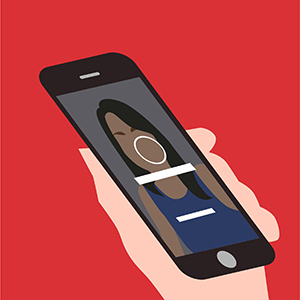
The last part of your live feed should basically be a summarily of everything that you have just said. This is great for those who came in late and it will refresh the memories of your viewers who were there from start to finish.
Aside from a summary, your ending portion of the feed should also include a Call to Action. This is where you suggest to your viewers what they should to in response to what they just heard from you including buying a product, subscribing to you, or to heading on to any of the videos and links you have recommended for them. Do this section right if you want to optimize the engagement your video has with your audience.
If you are a stickler for consistency, you can announce when your next video is coming up or encourage them to visit your page at the same time next week. This way, all of your live feeds have some sort of consistency that is going to keep engagements at a high for each of them.
How to Build Confidence?
If you are used to being shoved in front of a camera, then doing a Facebook Live feed should not be a problem. However, for those who have yet to do show up on broadcast, there is the chance that they will have to deal with their nerves.
Being camera-shy for your first live feed is understandable. You are new to the entire experience and there will be a lot of awkward moments in the entire feed. Of course, you don’t want to sound flat and boring since you don’t want your audience to disengage.
How do work around your first-time stage fright? There are few tips you have to remember.
-

1. Identify the Reason – What is it exactly that makes you apprehensive of facing a camera? Is it the overall way you look? Are you afraid of the potential backlash your feed might suffer online? What you are primarily afraid off tends to answer why you feel nervous about doing a Facebook live feed in the first place. Identify what they are first and the rest should follow.
-
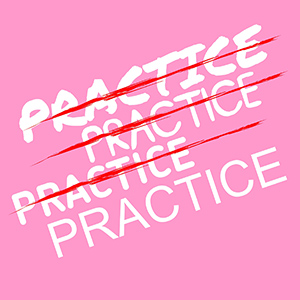
2. Practice – As cliché as this might sound, practice does make perfect. Before you make your live feed, you must have gone through the script of your feed for at least 5 times beforehand. If you know what to say next, you will fumble less when you are doing it live.Also, it helps you mentally condition yourself for the live feed. If you know what to say next, you will be more comfortable when saying it. Practice also gives you the time to iron out any quirk you might have delivering your lines and the expressions you make saying it.
-
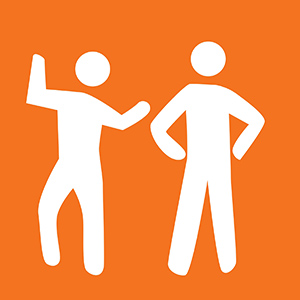
3. Learn Improv – The one thing you must understand is that even the best-laid plans can go awry and Facebook Live feeds are no different. Something might pop up in the middle of your feed like a pet or your friends or you might say something dumb in the middle of your monologue.The ability to quickly recover from mistakes while taking everything in stride is actually an important skill for actors and broadcasters. As such, you can learn from the best by watching videos online on improve comedy or news fails. The point here is to quickly regain momentum in your feed while keeping a straight face at all times.
-
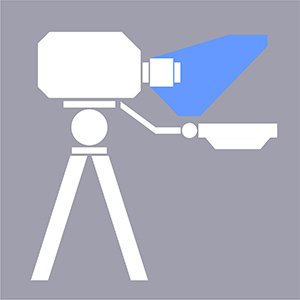
4. Get a Teleprompter – The one thing that makes feeds unnecessarily long is the presence of filler words like “um”, “like”, and “sort of”. These words act like a buffer of sorts for your brain to remember information while saying something.You can get rid of these by practicing, of course, and having someone else flash the script to you from behind the camera. Teleprompters (or idiot boards) is an age-old technique in broadcasting to help a speaker remember what to say next.
These tips will not give you the assurance that your feed will go off without a hitch. However, using them should help you deal with your nerves every time you have to do a live feed.
Final Thoughts
Doing a Facebook Live video for the first time can be a shocking experience but you should get used to it as time passes. In time, you will have a library’s worth of videos that you can link to each other, repurpose, and reuse to whatever you have in mind.
Will Facebook Live remain an effective tool for you and your content marketing campaign in the future? What other possible uses do you have in mind with it in tandem with your other tools? Let us know in the comments below!
References:
https://www.socialmediaexaminer.com/how-to-increase-your-facebook-live-video-reach/
https://yourlocalstudio.com/6-tips-to-turn-camera-shyness-into-camera-boldness/
https://www.wowza.com/blog/your-marketing-strategy-needs-facebook-live-infographic
BOOK RECOMMENDATIONS
- Rise of the Youpreneur: The Definitive Guide to Becoming the Go-To Leader in Your Industry and Building a Future-Proof Business
- KNOWN: The handbook for building and unleashing your personal brand in the digital age
- The Big Leap: Conquer Your Hidden Fear and Take Life to the Next Level
THANK YOU FOR LISTENING!
To get more SBM content sent directly to your device as they become available, you can subscribe on iTunes or Stitcher!
Also, reviews on iTunes are extremely helpful and greatly appreciated! I read each and every one of them, and feel free to share your URL there so I can contact you later on and say thanks!
If you enjoyed this episode you may also love listening to:


